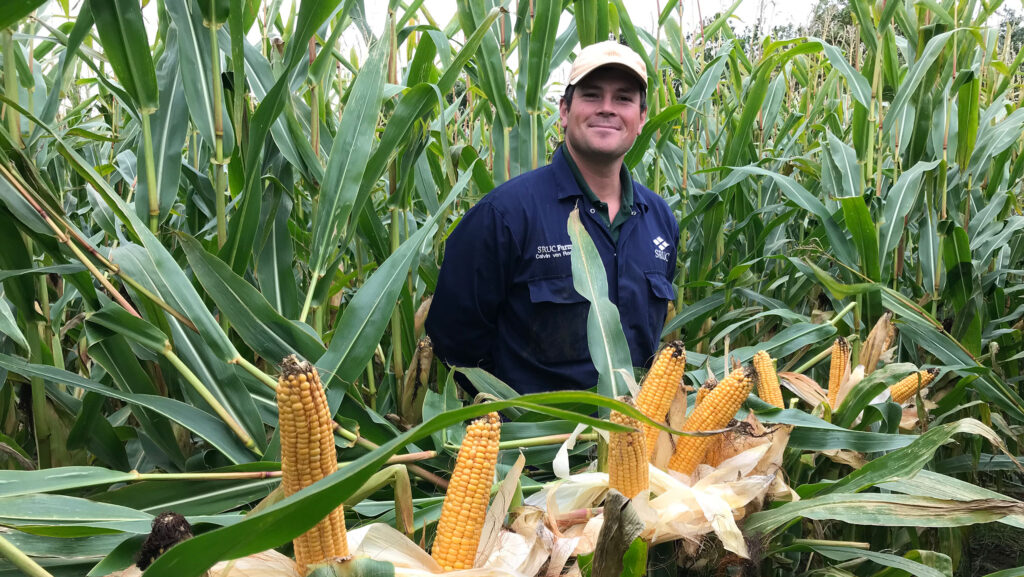Maize Watch: Marked difference under film near Dumfries
 Calvin van Rooyen © Neil Groom
Calvin van Rooyen © Neil Groom Harvesting is halfway at SRUC Crichton Royal Farm, Dumfries, where conventionally grown maize is lagging behind crop germinated under film.
While the farm’s maize under film was harvested last week (15 October), the conventional maize will not be taken until late October, weather permitting, says assistant farm manager and head of cropping Calvin van Rooyen.
Yields look down on the year in general, with maize grown under film yielding at about 32-34t/ha at 36% dry matter on the chopper.
This year’s film-grown maize yielded 2t/ha lower at 12t/ha dry matter This was harvested on 15 October, 15 days later than last year.
See also: Maize Watch: Bigger maize acreage brings results in Devon
A total of 50ha (124 acres) of maize was grown overall this year for the college’s 180 Holsteins. About 23.5ha was grown under film and 26.5ha was without film (conventionally) on lower-lying, earlier parts of the farm.
The proportion of maize grown under film has been reduced by Calvin and the team at Crichton in a bid to limit inputs and environmental impact. Last year two thirds was grown under film.
Film v conventional
Drill dates and germination were on schedule, with seed planted under maize on 24 April, the same day as 2023. Conventional maize was planted on 15 May, five days later than last year. But weather in May and June made crop establishment very slow.
“Everything was planted at about the same time as normal, but we never got the heat this year,” explains Calvin. “Last year we had a hot, dry spell in May and June, but this year it was cold.
“Crops also struggled with weeds competing. We had Redshank and creeping weeds. Everything got one pass of herbicide, but one field needed doing twice.”
Agronomist Richard Bray advised on variety choice. Faith and Blackjack were grown under film and Cito was grown conventionally, chosen for its early harvest ratings and high starch.
Calvin says he has seen a “huge difference” the two resulting crops. The conventionally grown is looking stunted, and 30cm shorter than film maize at about 150cm tall in places.
Rotation
Last year, winter wheat was grown after maize; this year, a ryegrass cover crop, sown at a rate of 15-20kg/ha, is planned to follow maize to provide pasture for outwintering replacement heifers.
Another maize crop may follow this, or it may be drilled with grass, depending on how conditions are in the spring, explains Calvin.
